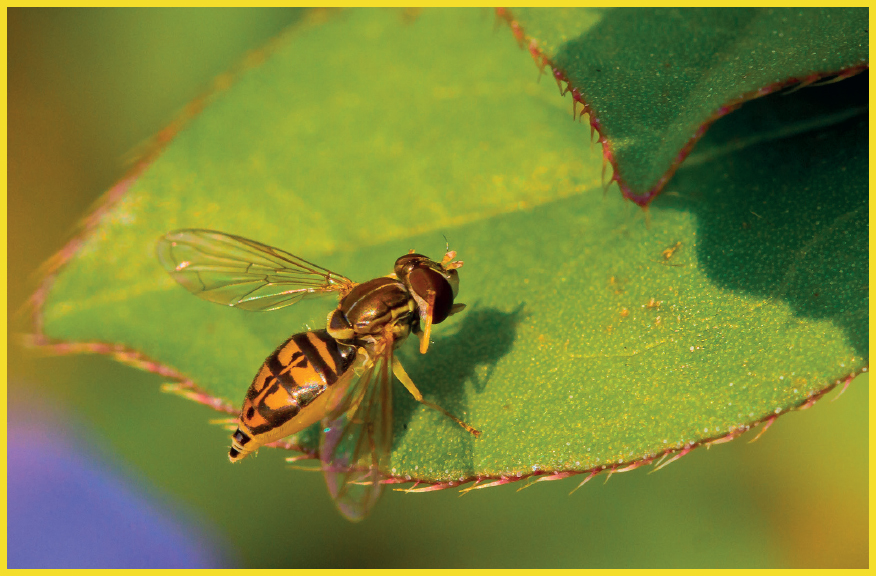19 Eastern Calligrapher
Toxomerus geminatus
Characteristics
Length: 0.24–0.31 in (6–8 mm).
Flight season: April–November.
Nectar sources: Many flowers.
Habitat: Forest, farmland, orchards, parks, gardens.

Sunflowers, fleabanes, and other daisies act as magnets for this hoverfly, which visits them and many other blooms in search of nectar. Its serial visitations to flowers ensure the transfer of pollen from one to another. Like many other hoverflies, adult eastern calligraphers are coloured and patterned to trick predators into thinking they are predatory wasps and bees. However, they don’t have a stinger and are completely harmless. The eastern calligrapher has a yellow face, reddish-brown eyes, a brown-and-yellow thorax, and a black-and-yellow patterned abdomen. Rather than simple stripes, the black is intricately shaped, with zigzag margins and an anchor pattern, as if finely worked by a calligrapher.
The eastern calligrapher is one of the most common hoverflies in eastern North America, its range extending from southern Canada to Texas and Florida. Its western equivalent lives in the Pacific coast states of the continent. Adults can be seen on the wing anywhere there are flattish-topped flowers; it can’t feed in tubular ones. As well as nectar and pollen, it feeds on aphids’ honeydew. Unlike its own larvae, however, an adult doesn’t have the mouthparts needed to prey upon the aphids themselves.